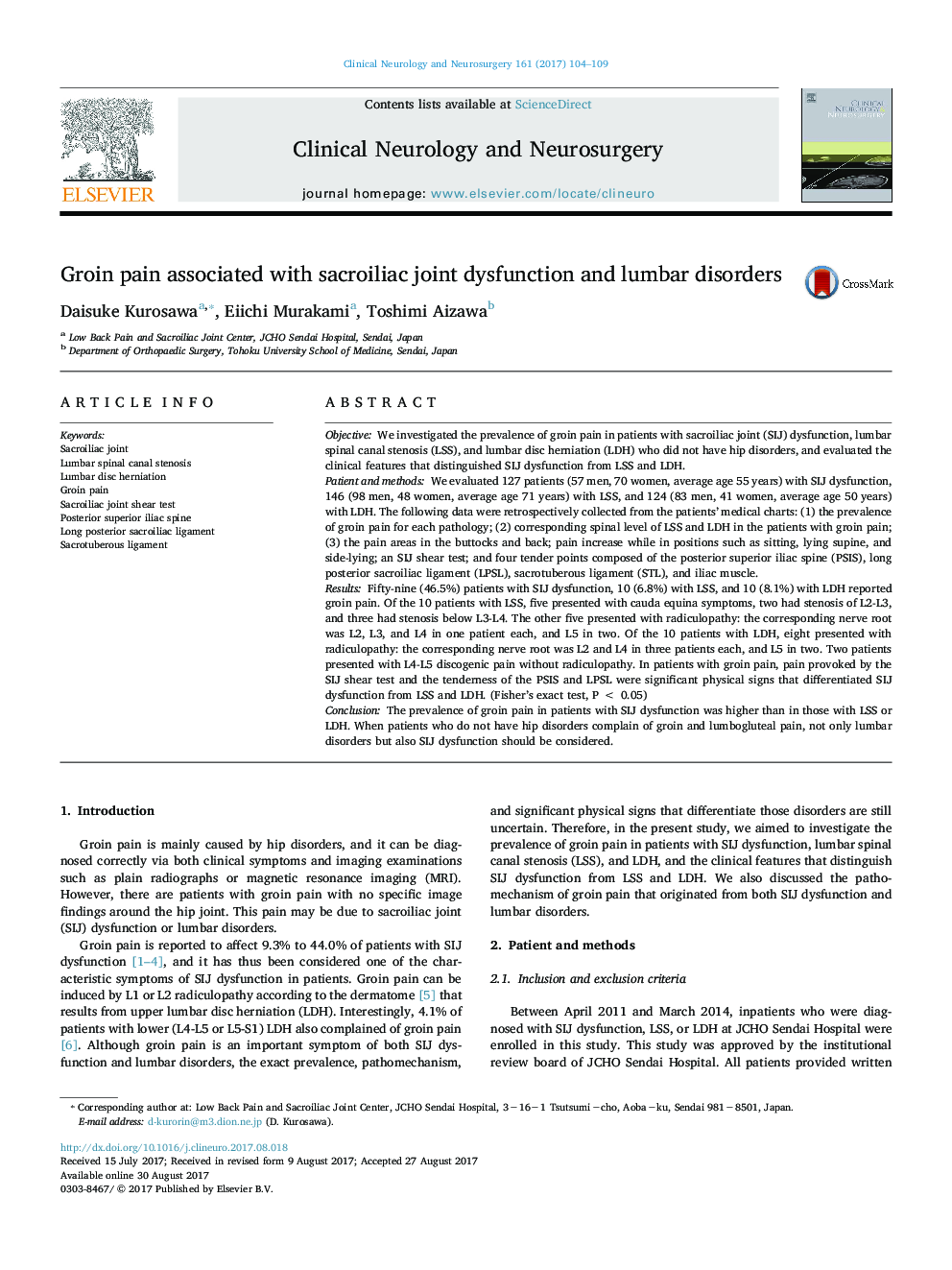| کد مقاله | کد نشریه | سال انتشار | مقاله انگلیسی | نسخه تمام متن |
|---|---|---|---|---|
| 5626983 | 1579661 | 2017 | 6 صفحه PDF | دانلود رایگان |
- We investigated groin pain in patients with SIJ dysfunction, LSS, and LDH.
- We evaluated the clinical features distinguishing SIJ dysfunction from LSS and LDH.
- Groin pain was more common in SIJ dysfunction patients than in LSS or LDH patients.
- Lumbar disorders and SIJ dysfunction could be present in patients with groin pain.
ObjectiveWe investigated the prevalence of groin pain in patients with sacroiliac joint (SIJ) dysfunction, lumbar spinal canal stenosis (LSS), and lumbar disc herniation (LDH) who did not have hip disorders, and evaluated the clinical features that distinguished SIJ dysfunction from LSS and LDH.Patient and methodsWe evaluated 127 patients (57 men, 70 women, average age 55 years) with SIJ dysfunction, 146 (98 men, 48 women, average age 71 years) with LSS, and 124 (83 men, 41 women, average age 50 years) with LDH. The following data were retrospectively collected from the patients' medical charts: (1) the prevalence of groin pain for each pathology; (2) corresponding spinal level of LSS and LDH in the patients with groin pain; (3) the pain areas in the buttocks and back; pain increase while in positions such as sitting, lying supine, and side-lying; an SIJ shear test; and four tender points composed of the posterior superior iliac spine (PSIS), long posterior sacroiliac ligament (LPSL), sacrotuberous ligament (STL), and iliac muscle.ResultsFifty-nine (46.5%) patients with SIJ dysfunction, 10 (6.8%) with LSS, and 10 (8.1%) with LDH reported groin pain. Of the 10 patients with LSS, five presented with cauda equina symptoms, two had stenosis of L2-L3, and three had stenosis below L3-L4. The other five presented with radiculopathy: the corresponding nerve root was L2, L3, and L4 in one patient each, and L5 in two. Of the 10 patients with LDH, eight presented with radiculopathy: the corresponding nerve root was L2 and L4 in three patients each, and L5 in two. Two patients presented with L4-L5 discogenic pain without radiculopathy. In patients with groin pain, pain provoked by the SIJ shear test and the tenderness of the PSIS and LPSL were significant physical signs that differentiated SIJ dysfunction from LSS and LDH. (Fisher's exact test, PÂ <Â 0.05)ConclusionThe prevalence of groin pain in patients with SIJ dysfunction was higher than in those with LSS or LDH. When patients who do not have hip disorders complain of groin and lumbogluteal pain, not only lumbar disorders but also SIJ dysfunction should be considered.
Journal: Clinical Neurology and Neurosurgery - Volume 161, October 2017, Pages 104-109
